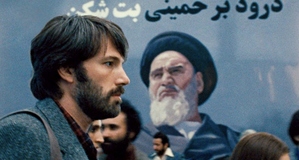Examining the Foundations of Documentary Film Through The Cove
By
2012, Vol. 4 No. 05 | pg. 1/2 | »
KEYWORDS:
Directed by Louie Psihoyos, The Cove (2009) is an Oscar-winning documentary that follows Psihoyos and a crew of devoted dolphin activists as they fight to stymie and bring attention to dolphin hunting in the small coastal village of Taiji, Japan. Psihoyos’ film is unusual for documentaries in that it combines his activist stance with “dramatic arcs and suspense one would expect in a James Bond or Hollywood action movie” (Rohter). Film critic Larry Rohter writes that The Cove “seems destined to generate an emotional and contentious debate” and the film does just that (Rohter). Indeed the film invokes a multitude of reactions, ranging from those who praise the movie’s captivating and atrocious tale to those who believe the film to be a form of propaganda: low in meaningful content, but high in bias and misinformation. Extreme one-sidedness is prevalent in The Cove: Psihoyos and his other subjects make convincing arguments regarding the inhumanity and the human dangers of the dolphin hunt, but the opposition is never given a chance to respond. Considering The Cove mirrors a Hollywood action film and overtly reflects the director’s opinion, should it be considered a true documentary? Where does such a one-sided and subjective film place in the grand history of documentary film? It would be tempting to dismiss The Cove as an overwhelmingly biased piece of propaganda, but “this is no angry enviro-rant but a living, breathing movie whose horrifying disclosures feel fully earned” (Catsoulis). After an examination of the history of documentary film and documentarians such as John Grierson, Robert Flaherty, Frederick Wiseman, Michael Moore, and others, it becomes apparent that subjectivity seeps into all non-fiction films. Ultimately, every documentarian makes decisions that range from subtle to overt that influence the presentation and reception of their material and Louie Psihoyos is no exception. While The Cove is biased and propagates some misinformation, it firmly adheres to the traditional documentary standards set forth in the early 20th century. The history of documentary film and non-fiction film emerges from a tradition of subjectivity and not a foundation of pure, unadulterated truth; as The Cove reveals, the notion of documentary as a representation of pure truth is a simple fallacy.The origins of documentary film can be traced back to December 28, 1895, when the influential French film pioneers, the Lumière brothers, held their first screening of ten short, nearly minute-length films. These films, which included footage of workers leaving the Lumière factory (La Sortie des l'Usine Lumière à Lyon) and a train arriving at a station (L'Arrivée d'un train à La Ciotat), were the first to be presented to a paying audience. While watching one of the films, an astonished witness supposedly exclaimed, ‘It is life itself!” (Ellis 9). Even with the criticism hurled at The Cove, the film firmly sticks to this motto. That is not to say that the film presents the only correct understanding of the dolphin hunt, but rather, the film is fairly straightforward in documenting the trials and tribulations that face a team of dedicated activists as they attempt to curb dolphin hunting with protests, public appeal, espionage, and more. As The Cove is filtered through the eyes of Psihoyos and his subjects, the film shows audiences the reality of the world according to those few individuals. By showing the real-life struggle of the subjects as well as their firm beliefs, The Cove is “life itself.” The genre of documentary film as we conceptualize it today emerged some years after the Lumière brothers. One of the most prominent early documentarians, producers, and critics—and the first to coin the term “documentary” in 1926—was John Grierson. In his 1932 essay, “First Principles of Documentary,” he writes that documentary films embody “the living scene and the living story,” something The Cove certainly does by showing audiences the struggles of Psihoyos, O’Barry, and the crew as they attempt to bring attention to the killing cove (21). While it may seem as if Grierson believes non-fiction films to portray “life itself,” he actually champions documentary film as “the creative treatment of actuality” (Ellis 5). While Grierson’s musings on non-fiction film are certainly relevant in the study of documentary tradition, it must be compared to other theories order to better understand what makes documentary film. In 1989, Northwestern film professor, Jack C. Ellis, synthesized theories of what exactly defines “documentary idea” in his definitive book The Documentary Idea: A Critical History of English-Language Documentary Film and Video. Ellis’ definition of “documentary” goes further than Grierson’s in recognizing the filmmaker’s influence, writing that, “documentary is purposive: it is intended to achieve something in addition to entertaining audiences and making money” (7). Ellis would agree with Grierson’s definition, but he adds that documentarians must also have some sort of motive that goes beyond entertainment and profit. Ellis’ theory that documentaries are made for a higher purpose applies to The Cove as the film’s producer is billionaire Netscape founder—and co-founder of the Oceanic Preservation Society with Psihoyos—, Jim Clark. According to Larry Rohter, Clark funded the production of The Cove, “more out of conviction than a desire to add to his bank account” (Rohter). This “conviction” to expose people to and bring an end to the murder of dolphins in Taiji supports early activist filmmaker Willard Van Dyke’s theory that, “documentary is film intended to bring about change in the audience – change in their understanding, their attitudes, and possibly their actions” (Ellis 6). The call-to-arms ending of The Cove makes it fairly evident that the film was made to change the audiences’ attitudes and drive them to action against the dolphin hunting industry. The Cove comes to a somber end as the screen turns black and text reads, “The Taiji dolphin slaughter is scheduled to resume every September” (Psihoyos). Psihoyos allows this line to sink in for a few seconds before he gives us a glimmer of hope, writing, “Unless we stop it” (Psihoyos). Now that there is hope, David Bowie’s uplifting song “Heroes” kicks in and we are implored by Psihoyos to take a stand – “Unless you stop it” (Psihoyos). We, the audience, are then instructed to “Text Dolphin to 44144” and visit a website where we can make contributions. The whole ending segment is a blatant call to arms and Psihoyos does nothing to hide this fact; clearly, The Cove was made, “more out of conviction” to halt the slaughter than for artistic purposes. More support for this belief comes from the 2010 Academy Awards, where The Cove won the Oscar for Best Documentary Feature. During the acceptance speech, key subject –and founder of the Dolphin Project and director of Save Japan Dolphins – Ric O’Barry carried a sign that advertised the same text-to-contribute number. Because of his actions, Psihoyos and crew were cut sort of their acceptance speech and the camera zoomed away from the sign. Even so, text subscriptions almost doubled after the broadcast, which is surely what Psihoyos and his fellow filmmakers would have hoped for (Tsirulnik). Even though The Cove garnered Academy Award recognition, Psihoyos is more interested in spreading the message of the film than making something artistically beautiful; “What I set out to do was not so much make a movie as to create a movement…this movie is a tool to shut this thing down and end the barbarism we saw back there in that cove” (Rohter). Figure 1. Two moments from the end of The Cove that best display its call-to-arms tone as Psihoyos implores his audience to take action. Psihoyos, 2009.
Now that we have thoroughly explored the definition of “documentary,” we must turn towards the study of select films. A good starting point is the first feature-length documentary, Robert Flaherty’s 1922 documentary of Inuit life in Canada: Nanook of The North. In the film’s introduction, Flaherty writes that if he were to focus on a single Inuit, “and make him typify the Eskimos…the results would be well worth while” (Flaherty). The “fearless, lovable, happy-go-lucky Eskimo” he chooses is the great Nanook (Flaherty). Flaherty studied the Inuit of the Hudson Bay region for many years before setting forth to make a film and, in a way, Flaherty’s film has a base in salvage anthropology—the belief in documenting rituals, languages, and other practices before a native society collapses (Ellis 8, Arkin). In order to “preserve” the culture of the Inuit, Flaherty changed some facts: for example, Nanook’s real name was actually Allakariallak and he had more than one wife, contrary to his monogamous lifestyle portrayed in the film. Furthermore, the Inuit—they did not call themselves “Eskimos”—lived in houses, not igloos, possessed radios, and no longer participated in the antiquated hunting style depicted in the film (Godmillow 7). John Grierson believes that “such an interpretation of subject matter reflects, of course, Flaherty’s particular philosophy of things” (Grierson 22). It may seem outrageous to some today that such a highly acclaimed documentary would contain such outright subjectivity and misinformation but it is actually quite commonplace. Flaherty actively influenced the audience by changing facts and by doing so Flaherty created a film that adheres uniquely to his point of view – “particular philosophy” – of the Inuit. This exploration of Nanook shows us that even in the first feature-length documentary there is blatant subjectivity and bias. One of the most serious moments of subjectivity in The Cove is the heroic depiction of two Japanese councilmen: Hisato Ryono and Junichino Yamashita. In the film the two are celebrated for brining awareness to the dangers associated with eating dolphin meat. While Yamashita, Taiji’s local assemblyman, has long fought for increased awareness of the risks, Ryono – “who was touted as a hero on the mercury issue in the documentary” – has revealed he was told his interview would be used for a documentary on “international contamination of the oceans’” and not for The Cove (Masters). Complaints by supposed misinformed interviewees are not just limited to Ryono as a few Japanese who appear in the documentary, such as Tetsuya Endo – an associate professor at a Japanese University –, claim to have been lied to about The Cove’s subject matter (Alabaster). Since the film’s release, Ryono has requested that the film be re-edited to remove his parts and Endo is considering taking legal action (Masters, Alabaster). These examples show how The Cove, like Flaherty’s Nanook, is rife with subjectivity; Ryono, Endo, and other subjects are opposed to the overall message in The Cove, yet Psihoyos uses their interviews to support the very cause they resist. Whereas Flaherty changed information to better connect Nanook’s story with an audience, Psihoyos changed things to help bring an end to the slaughter; these changes reflect the filmmakers’ “particular philosophy of things.” Figure 2. Hisato Ryono and Junichiro Yamashita are praised as heroes in The Cove. Ryono would later request to be removed from the film. Psihoyos, 2009.
About forty years after Nanook of the North, a movement arose in documentary film that promised to exhibit straight, unadulterated, reality. This movement, otherwise know as direct cinema, saw documentarians asking, “What if the filmmakers were simply to observe what happens in front of the camera without overt intervention?” (Nichols, Intro 109). These directors attempted to portray “life itself” and uphold the concept of “reality” by attempting to be some sort of “fly on the wall” (Nichols, Intro 110 -112).Continued on Next Page » Suggested Reading from Inquiries Journal
Inquiries Journal provides undergraduate and graduate students around the world a platform for the wide dissemination of academic work over a range of core disciplines. Representing the work of students from hundreds of institutions around the globe, Inquiries Journal's large database of academic articles is completely free. Learn more | Blog | Submit Latest in Film & Media |


















